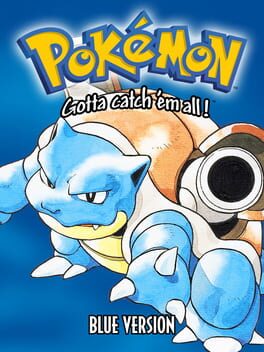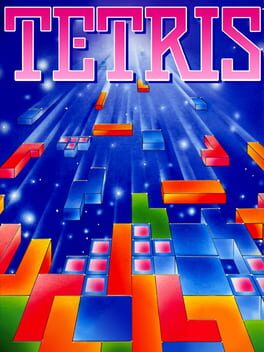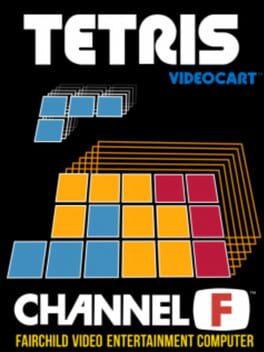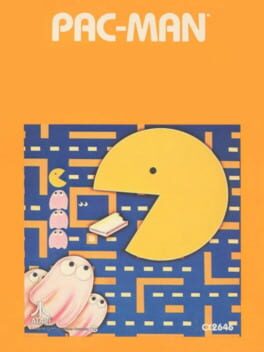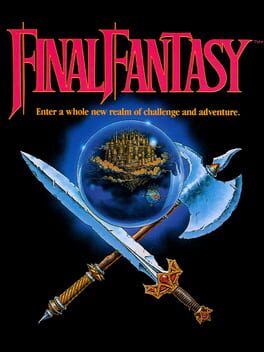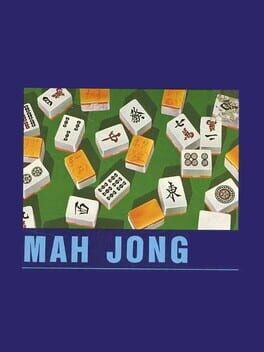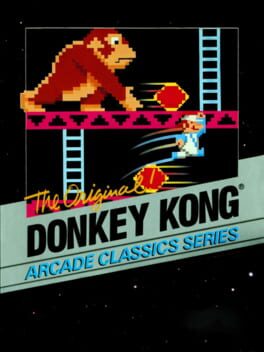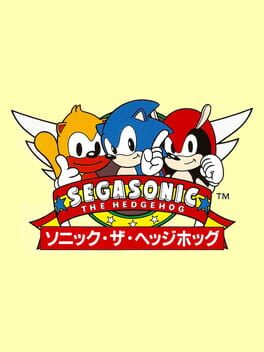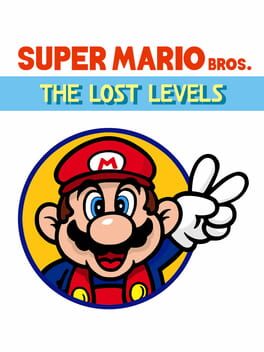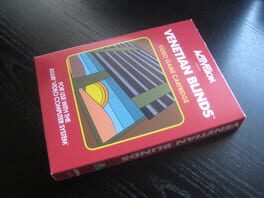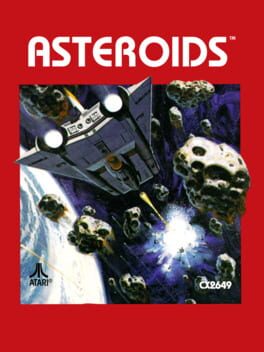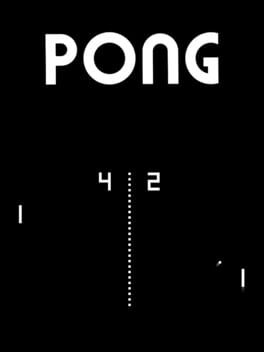Chickenzes
Started out fine but then they hit me with the 1-2-punch of weird esoteric progression and Skeletor's CBT carnival. Normally I would just try to push past a difficulty spike like this but with how slow grinding is and how many many people online say that it's gonna keep being like this, I think I'm fine to call it quits here for the time being.
1996
1989
At the end of the day it's still Tetris, but this particular version is pretty lacking. It's especially hard to return to versions without the bag system in place, as they feel so much more random. There's also practically no lock delay which makes it very easy to end up with pieces in the wrong place, and don't even think about doing any kicks or spins.
2004
1982
Attempting to seriously review every game I've played #7:
2 years late and barely recognizable, Pac-Man hit the Atari 2600, a system which it probably never should've touched. The attempt is admirable, but the VCS was clearly showing its age by 1982, and it was not suited to ports of the games that were popular in arcades. At the time this was pretty much the closest you could get to Pac-Man at home, but just a year later the Intellivision got its own port of the game, which is much more arcade accurate, and even the cancelled Coleco port holds up better.
This game is semi-often cited as one of the causes of the crash of 1983, and while it's far from the worst 2600 game on the market at the time, it's an easy one to pick on. The 2600 simply was not good enough at this point to handle the types of games that it was being tasked with, and if a console that was already 5 years old was propping up the entire North American video game market, it's not hard to see why it would crash.
I've focused a lot on this game's historical context, and not very much on the game itself, and that's because there really isn't much to say. Everything about this game feels like a weird bootleg version of itself both mechanically and visually. The maze is heavily simplified even compared to the original game, the ghost AI is less interesting, and it's just generally much easier.
Unless you have a strong desire to, don't play this version. The arcade version is available on pretty much every system nowadays anyway, while the only way to play this port legally is on the original hardware.
2 years late and barely recognizable, Pac-Man hit the Atari 2600, a system which it probably never should've touched. The attempt is admirable, but the VCS was clearly showing its age by 1982, and it was not suited to ports of the games that were popular in arcades. At the time this was pretty much the closest you could get to Pac-Man at home, but just a year later the Intellivision got its own port of the game, which is much more arcade accurate, and even the cancelled Coleco port holds up better.
This game is semi-often cited as one of the causes of the crash of 1983, and while it's far from the worst 2600 game on the market at the time, it's an easy one to pick on. The 2600 simply was not good enough at this point to handle the types of games that it was being tasked with, and if a console that was already 5 years old was propping up the entire North American video game market, it's not hard to see why it would crash.
I've focused a lot on this game's historical context, and not very much on the game itself, and that's because there really isn't much to say. Everything about this game feels like a weird bootleg version of itself both mechanically and visually. The maze is heavily simplified even compared to the original game, the ghost AI is less interesting, and it's just generally much easier.
Unless you have a strong desire to, don't play this version. The arcade version is available on pretty much every system nowadays anyway, while the only way to play this port legally is on the original hardware.
1987
Don't think of this as a review, I just need to complain.
I'm still very early in the game, so I'm gonna try to push through and get a bit further before I fully pass judgement, but man this game is slow compared to Dragon Quest. Starting out with a party of 4 fighting up to 6 enemies at a time would already make encounters take way too long, but then on top of that like half of your attacks miss, your party won't be doing any damage if they aren't fighters, and every encounter gives hardly any XP despite needing 10 times more to level up than Dragon Quest. This is a technical improvement on that game in almost every way, but I feel like the gameplay just isn't there to back it up. Gonna keep going though, just wanted to get this out there in case either I end up hating the game and feel vindicated or end up liking the game and can look back on this and say "wow what an idiot I was".
I'm still very early in the game, so I'm gonna try to push through and get a bit further before I fully pass judgement, but man this game is slow compared to Dragon Quest. Starting out with a party of 4 fighting up to 6 enemies at a time would already make encounters take way too long, but then on top of that like half of your attacks miss, your party won't be doing any damage if they aren't fighters, and every encounter gives hardly any XP despite needing 10 times more to level up than Dragon Quest. This is a technical improvement on that game in almost every way, but I feel like the gameplay just isn't there to back it up. Gonna keep going though, just wanted to get this out there in case either I end up hating the game and feel vindicated or end up liking the game and can look back on this and say "wow what an idiot I was".
1983
Attempting to seriously review every game I've played #6:
Mah Jong is the first of two Japan-exclusive games released for the Famicom a few months after it launched. The choice not to bring this game to the west makes a lot of sense, as Mahjong is a game with fairly niche appeal outside of East Asia.
This is a competent Riichi Mahjong sim, though it only pits you against a single computer controlled opponent, as opposed to the traditional 3 and 4 player games. The lack of multiplayer is a shame but makes sense given how impractical it would be.
My biggest complaint with this game is how slow it feels compared to other Riichi Mahjong games I've played. Ironically, this is a result of how short rounds are, with the number of tiles you can discard before the round ends being so low that over half of your rounds will likely end in a draw, which results in the round being entirely pointless. This means games can stretch on for upwards of 30 minutes or more, and I've seen the round counter go as high as 12 in a single game. I imagine the game would've benefited from adapting the ruleset more to fit the 2 player format, as in 3 player Mahjong where some tiles are removed from play.
Otherwise though this is a serviceable enough sim for the time, though there really isn't much reason for anyone to return to it. Just play Mahjong Soul or Tenhou.
Mah Jong is the first of two Japan-exclusive games released for the Famicom a few months after it launched. The choice not to bring this game to the west makes a lot of sense, as Mahjong is a game with fairly niche appeal outside of East Asia.
This is a competent Riichi Mahjong sim, though it only pits you against a single computer controlled opponent, as opposed to the traditional 3 and 4 player games. The lack of multiplayer is a shame but makes sense given how impractical it would be.
My biggest complaint with this game is how slow it feels compared to other Riichi Mahjong games I've played. Ironically, this is a result of how short rounds are, with the number of tiles you can discard before the round ends being so low that over half of your rounds will likely end in a draw, which results in the round being entirely pointless. This means games can stretch on for upwards of 30 minutes or more, and I've seen the round counter go as high as 12 in a single game. I imagine the game would've benefited from adapting the ruleset more to fit the 2 player format, as in 3 player Mahjong where some tiles are removed from play.
Otherwise though this is a serviceable enough sim for the time, though there really isn't much reason for anyone to return to it. Just play Mahjong Soul or Tenhou.
1983
Attempting to seriously review every game I've played #5:
Being one of the first three games released for the Famicom in Japan, and being a port of an arcade game from two years prior, Donkey Kong really doesn't hold up too well. This is by far the most arcade accurate port of the game available at the time, and for the most part it still is one of the most accurate versions of the game short of the original arcade version itself (which Nintendo seem averse to re-releasing). However despite one of the design goals of the Famicom being to play Donkey Kong as accurately as possible, there are some unfortunate concessions made here. The cement factory stage is completely missing for one, arguably the largest piece of cut content, the cutscenes are missing, and the "How high can you get?" screen has been removed. There are also some minor changes made, such as the lack of point combos for jumping over multiple obstacles at once, and the game being physically shorter than its arcade counterpart, a result of the arcade version using a monitor rotated 90 degrees, creating a 3:4 aspect ratio as opposed to the standard aspect ratio of 4:3.
I'm not an expert on the original game, but it also seems as though barrel steering is missing here. In my experience barrels seem to decide whether to descend ladders purely based on RNG, while in the arcade version you could manipulate them by tilting the stick towards the ladder as a barrel approached it, which was invaluable for splitting up large clusters to make the game easier, as well as grouping barrels up for higher combos. Similarly I believe the fireball enemies behaved differently in the arcade version, being more likely to move upward when Mario was above them and downward when he was below. These changes aren't likely to matter to most people, but they undeniably make the game much more random, which can at times be very frustrating.
The game itself however is absolutely still Donkey Kong, with all the problems that entails. Jumping is stiff and awkward, hammers aren't really worth the trouble of getting them most of the time, and sometimes an impossible or near-impossible pattern will get sent your way with no way of avoiding it. The fall damage mechanic is somewhat baffling to me, as the threshold for dying from a fall is so short that even small falls can cost you a run. I have a lot more to say on my issues with the game's design, but I'll save them for when I review the arcade version on its own. Suffice to say, I don't think Donkey Kong is particularly good in the modern age. That being said it is still fun. Once you grow accustomed to the jank, there is still some amount of entertainment to be found here, I just can't recommend it to most people unless they have a particularly strong interest in Nintendo's history.
Being one of the first three games released for the Famicom in Japan, and being a port of an arcade game from two years prior, Donkey Kong really doesn't hold up too well. This is by far the most arcade accurate port of the game available at the time, and for the most part it still is one of the most accurate versions of the game short of the original arcade version itself (which Nintendo seem averse to re-releasing). However despite one of the design goals of the Famicom being to play Donkey Kong as accurately as possible, there are some unfortunate concessions made here. The cement factory stage is completely missing for one, arguably the largest piece of cut content, the cutscenes are missing, and the "How high can you get?" screen has been removed. There are also some minor changes made, such as the lack of point combos for jumping over multiple obstacles at once, and the game being physically shorter than its arcade counterpart, a result of the arcade version using a monitor rotated 90 degrees, creating a 3:4 aspect ratio as opposed to the standard aspect ratio of 4:3.
I'm not an expert on the original game, but it also seems as though barrel steering is missing here. In my experience barrels seem to decide whether to descend ladders purely based on RNG, while in the arcade version you could manipulate them by tilting the stick towards the ladder as a barrel approached it, which was invaluable for splitting up large clusters to make the game easier, as well as grouping barrels up for higher combos. Similarly I believe the fireball enemies behaved differently in the arcade version, being more likely to move upward when Mario was above them and downward when he was below. These changes aren't likely to matter to most people, but they undeniably make the game much more random, which can at times be very frustrating.
The game itself however is absolutely still Donkey Kong, with all the problems that entails. Jumping is stiff and awkward, hammers aren't really worth the trouble of getting them most of the time, and sometimes an impossible or near-impossible pattern will get sent your way with no way of avoiding it. The fall damage mechanic is somewhat baffling to me, as the threshold for dying from a fall is so short that even small falls can cost you a run. I have a lot more to say on my issues with the game's design, but I'll save them for when I review the arcade version on its own. Suffice to say, I don't think Donkey Kong is particularly good in the modern age. That being said it is still fun. Once you grow accustomed to the jank, there is still some amount of entertainment to be found here, I just can't recommend it to most people unless they have a particularly strong interest in Nintendo's history.
Attempting to seriously review every game I've played #4:
SegaSonic the Hedgehog is a somewhat obscure Japan-only arcade game that was played with a trackball. For quite a while this game wasn't playable at all unless you had an original machine, but thankfully now MAME and FBNeo both support it.
The biggest issue with this game is the controls. I'm sure it works fine on an actual trackball, but unfortunately unless you have one you're going to be pretty limited. It's very difficult to be precise since analog sticks really aren't well suited to slowing down. I played this on Steam Deck and I wish FBNeo had an option for mouse to trackball emulation since then I would be able to use the trackpad to at least approximate the feeling of a trackball. Be prepared to find yourself slamming into walls and falling off of ledges a lot. The coyote frames, which are really coyote seconds, are appreciated as a way to mitigate this, but it's still very awkward to deal with since moving back away from ledges doesn't seem to work consistently, and not being able to jump when your character is in the air means that precise platforming is pretty difficult. Though the only level that really asks that of you is Wild Water Ways, which despite its creativity is easily the worst level in the game as a result.
But, if you can get past the control issues, this is a really great game. There's a crazy amount of detail in every level and all the characters have super expressive animations, it really feels like a playable cartoon (or anime), and not in the Dragon's Lair way. Unlike a certain other isometric Sonic game, this game never really uses its third dimension other than in brief set pieces and for visual flair, which is absolutely preferable. Unfortunately that doesn't really fix the fact that positioning your character in a 3D environment is still pretty difficult without depth, and I did find myself having some moments where I genuinely didn't know where they were physically.
I'm pretty mixed on the soundtrack in this game. I think the compositions are great, but the instrumentation ends up sounding a bit flat and samey, and does grate on you after a while. Special mention has to go to the Trap Tower theme though, and especially its remix from Sonic Mania.
Overall a great arcade game, and if you can get the controls working then I'd recommend it. I hope to see an official re-release of this with controls that are specially configured to work well with an analog stick, but unfortunately I doubt that's very likely to happen.
SegaSonic the Hedgehog is a somewhat obscure Japan-only arcade game that was played with a trackball. For quite a while this game wasn't playable at all unless you had an original machine, but thankfully now MAME and FBNeo both support it.
The biggest issue with this game is the controls. I'm sure it works fine on an actual trackball, but unfortunately unless you have one you're going to be pretty limited. It's very difficult to be precise since analog sticks really aren't well suited to slowing down. I played this on Steam Deck and I wish FBNeo had an option for mouse to trackball emulation since then I would be able to use the trackpad to at least approximate the feeling of a trackball. Be prepared to find yourself slamming into walls and falling off of ledges a lot. The coyote frames, which are really coyote seconds, are appreciated as a way to mitigate this, but it's still very awkward to deal with since moving back away from ledges doesn't seem to work consistently, and not being able to jump when your character is in the air means that precise platforming is pretty difficult. Though the only level that really asks that of you is Wild Water Ways, which despite its creativity is easily the worst level in the game as a result.
But, if you can get past the control issues, this is a really great game. There's a crazy amount of detail in every level and all the characters have super expressive animations, it really feels like a playable cartoon (or anime), and not in the Dragon's Lair way. Unlike a certain other isometric Sonic game, this game never really uses its third dimension other than in brief set pieces and for visual flair, which is absolutely preferable. Unfortunately that doesn't really fix the fact that positioning your character in a 3D environment is still pretty difficult without depth, and I did find myself having some moments where I genuinely didn't know where they were physically.
I'm pretty mixed on the soundtrack in this game. I think the compositions are great, but the instrumentation ends up sounding a bit flat and samey, and does grate on you after a while. Special mention has to go to the Trap Tower theme though, and especially its remix from Sonic Mania.
Overall a great arcade game, and if you can get the controls working then I'd recommend it. I hope to see an official re-release of this with controls that are specially configured to work well with an analog stick, but unfortunately I doubt that's very likely to happen.
Attempting to seriously review every game I've played #3:
This game certainly earns its reputation of being incredibly difficult, but I honestly don't hate it? Sure, it's very hard, and very troll-y, but I never really found unfair, at least no less fair than the first game. Playing this game immediately after exhausting SMB1 also helps, since this was always intended to be essentially just more levels for people who had played the original game to death. The trolls are mostly just funny to me, and none of them actually permanently screw you over. Continues are no longer locked behind an easter egg, and there's an easy spot to do the 1-up trick on the first screen of the first level, so you're never going to be pressed for lives.
The graphical changes are very welcome and I'd be hard pressed to find a single sprite from SMB1 I like more than 2. It's a shame they didn't make use of the Disk System's extra sound channel to expand upon the music from the first game, but the soundtrack is so iconic that I really couldn't imagine it being different.
Another criticism I've seen leveled against this game is the choice to lock the extra worlds behind beating the game 8 times, and I really don't feel like that's a problem. These games were built for replays, and I genuinely think that they get better when you play them like that. Replaying the original game dozens of times to unlock the RetroAchivements for it gave me a much stronger appreciation of it than I ever thought I'd have. Plus, they are extra worlds, they're meant as a neat bonus for players who've mastered the base game.
I can understand disliking this game, but as someone who really appreciates the higher difficulty and improved graphics, I honestly like this more than SMB1.
This game certainly earns its reputation of being incredibly difficult, but I honestly don't hate it? Sure, it's very hard, and very troll-y, but I never really found unfair, at least no less fair than the first game. Playing this game immediately after exhausting SMB1 also helps, since this was always intended to be essentially just more levels for people who had played the original game to death. The trolls are mostly just funny to me, and none of them actually permanently screw you over. Continues are no longer locked behind an easter egg, and there's an easy spot to do the 1-up trick on the first screen of the first level, so you're never going to be pressed for lives.
The graphical changes are very welcome and I'd be hard pressed to find a single sprite from SMB1 I like more than 2. It's a shame they didn't make use of the Disk System's extra sound channel to expand upon the music from the first game, but the soundtrack is so iconic that I really couldn't imagine it being different.
Another criticism I've seen leveled against this game is the choice to lock the extra worlds behind beating the game 8 times, and I really don't feel like that's a problem. These games were built for replays, and I genuinely think that they get better when you play them like that. Replaying the original game dozens of times to unlock the RetroAchivements for it gave me a much stronger appreciation of it than I ever thought I'd have. Plus, they are extra worlds, they're meant as a neat bonus for players who've mastered the base game.
I can understand disliking this game, but as someone who really appreciates the higher difficulty and improved graphics, I honestly like this more than SMB1.
1989
1982
1981
1972
Attempting to seriously rate/review every single game I've played - Day 2:
Pong is a game whose claims to fame are mostly dubious nowadays. It's far from the first video game, heck it wasn't even Atari's first game. It wasn't the first coin-operated video game, being beaten out by both Galaxy Game and Bushnell's previous game, Computer Space, and Tennis for Two even predates it as a tennis game. That being said, it would be foolish to suggest that Pong is irrelevant to the history of video games.
For the time, Pong is actually surprisingly innovative. The way the ball interacts with the paddles is quite intuitive, and the sound design, while simple, evokes the sound of ping-pong effectively, and all of this on basic transistor-built logic. Its simplicity is also to Pong's credit; while many other early video games can be overly complex due to trying to do things the hardware of the time simply wasn't equipped to handle, Pong is something that anyone can immediately understand.
One thing Pong can absolutely lay claim to is being the first video game of any real notoriety. While previous games were seen mainly as novelties, Pong helped to cement that games were something people could keep coming back to, and even established the home video game market with the number of unofficial home ports it received. It propelled Atari to success, and it's arguable that without them, video games as we know them wouldn't exist.
You might notice that despite waffling on about this, I still only gave this game a single star, and that's not because I think it's bad. Mainly, this is just a consequence of how I rate games, while Pong is incredibly important and well made, it simply doesn't have many of the things I personally come to video games for. Despite its importance, the game is very much a relic of a bygone age, and modern players are likely to come away with the reaction of "well that was neat", and then move on after 5 minutes. It's like early cinema: there are aspects to appreciate, and its impact is undeniable, but it's also just going to be inaccessible to a modern audience.
Pong is a game whose claims to fame are mostly dubious nowadays. It's far from the first video game, heck it wasn't even Atari's first game. It wasn't the first coin-operated video game, being beaten out by both Galaxy Game and Bushnell's previous game, Computer Space, and Tennis for Two even predates it as a tennis game. That being said, it would be foolish to suggest that Pong is irrelevant to the history of video games.
For the time, Pong is actually surprisingly innovative. The way the ball interacts with the paddles is quite intuitive, and the sound design, while simple, evokes the sound of ping-pong effectively, and all of this on basic transistor-built logic. Its simplicity is also to Pong's credit; while many other early video games can be overly complex due to trying to do things the hardware of the time simply wasn't equipped to handle, Pong is something that anyone can immediately understand.
One thing Pong can absolutely lay claim to is being the first video game of any real notoriety. While previous games were seen mainly as novelties, Pong helped to cement that games were something people could keep coming back to, and even established the home video game market with the number of unofficial home ports it received. It propelled Atari to success, and it's arguable that without them, video games as we know them wouldn't exist.
You might notice that despite waffling on about this, I still only gave this game a single star, and that's not because I think it's bad. Mainly, this is just a consequence of how I rate games, while Pong is incredibly important and well made, it simply doesn't have many of the things I personally come to video games for. Despite its importance, the game is very much a relic of a bygone age, and modern players are likely to come away with the reaction of "well that was neat", and then move on after 5 minutes. It's like early cinema: there are aspects to appreciate, and its impact is undeniable, but it's also just going to be inaccessible to a modern audience.

